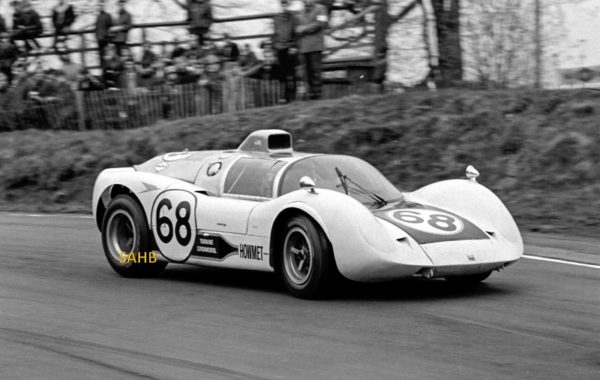
During the late 1960s there were several attempts to use gas turbines in motor racing, notably at Indianapolis where sustained high speeds suited their characteristics. Lotus were heavily involved with their Type 56 and they even carried the idea over to Formula 1 in the early 70s but for various reasons the idea never really caught on.
Howmet Corporation of New York, a major supplier of specialised alloys and metals, took the opportunity to promote its expertise when sports car racer Ray Heppenstall proposed that a lightweight turbine unit in an otherwise fairly conventional chassis could be a successful combination which would achieve their aim. He selected the two-stage Continental TS325-1 unit, originally intended for use in military helicopters and, to solve the problem that turbines are not designed to slow down for corners, he inserted two waste gates between the gas-generating turbine and the power turbine connected to the output shaft which, unlike the 4WD Indy cars, would drive just the rear wheels. This allowed the turbine to continue to operate at maximum rpm – around 57,000 – while as soon as the driver closed the gate to stop the gases venting to atmosphere, full power was available without usual lag. At full throttle, the engine produced around 325 bhp and with an inlet area of just under 12 sq in it was deemed to be equivalent to a capacity of 2,960cc, the maximum for the then current Group 6 prototype class. A single-speed transmission was all that was necessary although the ratio could be changed to suit different circuits.
Original plans for 1968 were to compete at Daytona, Sebring and Le Mans but when the FIA decided that turbine cars would be eligible for manufacturers championship points, Howmet added the BOAC 500 at Brands Hatch to the schedule. That race was on the 7th of April 1968, always remembered as the day Jim Clark, who originally was to have driven in the Brands Hatch race, died at Hockenheim. The Howmet, driven by Dick Thompson and – appropriately – BOAC pilot, Hugh Dibley crashed out of the race.
Five days later, Good Friday, the BRSCC’s Oulton Park race meeting included a 37-lap race for Group 4 and 6 sports cars and the Howmet, again with Dibley at the controls, was entered. The race was won by Brian Redman in Sid Taylor’s Lola-Chevrolet T70 from Paul Hawkins’s Ford GT40. The Howmet was lying in third place when Dibley pitted to refuel, and it was discovered that the starter wiring had burned out so the car was retired.
Two Howmet TXs were entered at Le Mans, postponed that year to September, but neither finished. That ended the short career of the Howmet TX, only two of which were built – but both survive. Bob McKee, who built the original cars and later restored them, used a spare chassis to make up a third one but without the waste gate arrangement needed to make the car fully functional.
Text and picture by Peter McFadyen







Leave a Comment